The ocean depths harbor creatures with abilities that seem straight out of science fiction. These remarkable adaptations help marine animals survive in some of Earth’s most challenging environments—from the crushing pressure of the deep sea to the competitive coral reef ecosystems. Far beyond the familiar capabilities of sea creatures, these hidden “superpowers” represent millions of years of evolutionary innovation. From generating electricity to changing sex, producing light in darkness to surviving without oxygen, ocean animals possess an arsenal of extraordinary biological tricks that humans are only beginning to understand. Let’s dive into the fascinating world of 15 ocean animals with truly remarkable hidden talents.
13. Electric Eels Living Batteries That Generate Up to 860 Volts

Despite their name, electric eels aren’t true eels but rather a type of knifefish native to South American waters. These remarkable creatures possess one of the animal kingdom’s most powerful biological weapons: specialized electrocytes that function like tiny batteries. When stacked together, these cells can generate a shocking 860 volts of electricity—enough to stun or kill prey and deter predators. What makes this ability even more impressive is how electric eels use this power with precision. They can emit low-voltage pulses to navigate murky waters and detect hidden prey, functioning like a living sonar system. For hunting or defense, they unleash powerful discharges that can incapacitate fish or even small mammals. Recent research has revealed they can even leap partially out of water to deliver targeted shocks to threats above the surface—a sophisticated electrical attack strategy previously unknown to science.
12. Mantis Shrimp The Fastest Punch in the Animal Kingdom

The unassuming mantis shrimp possesses what might be pound-for-pound the most powerful weapon in nature. Their specialized limbs, called dactyl clubs, can accelerate with the same velocity as a .22 caliber bullet—reaching speeds of up to 50 mph and striking with a force of 1,500 newtons. This punch happens so quickly that it creates cavitation bubbles in the water that collapse with enough energy to produce light (sonoluminescence) and temperatures nearly as hot as the sun’s surface. Different mantis shrimp species have evolved either “smashers” that pulverize hard-shelled prey or “spearers” that impale soft-bodied targets. Perhaps equally impressive is their extraordinary vision. While humans have three types of color-receptive cones in our eyes, mantis shrimp possess up to 16 different photoreceptors that allow them to see ultraviolet, infrared, and even detect polarized light. This gives them the most complex visual system known to science, though researchers debate whether they perceive colors in ways we can comprehend.
11. Mimic Octopus The Ultimate Master of Disguise

Discovered in 1998 in the shallow waters of Indonesia, the mimic octopus (Thaumoctopus mimicus) represents one of the most sophisticated masters of disguise on the planet. Unlike other octopuses that can change color and texture to blend into their surroundings, the mimic octopus takes camouflage to another level by impersonating other dangerous sea creatures. It can contort its flexible body and adjust its coloration to convincingly mimic at least 15 different marine species, including venomous lionfish, sea snakes, and flatfish. When threatened, this intelligent cephalopod selects the most effective disguise based on the specific predator it faces—showcasing remarkable situational awareness and decision-making. This strategic mimicry allows a relatively vulnerable octopus to advertise the dangerous properties of more formidable creatures. The mimic octopus accomplishes these transformations through specialized skin cells called chromatophores, iridophores, and papillae that can instantly change color, reflectivity, and texture. What makes this ability truly extraordinary is that it combines both morphological adaptation and complex behavioral patterns, suggesting a level of cognitive sophistication rare in invertebrates.
10. Hagfish Slime Factories With Knots of Escape
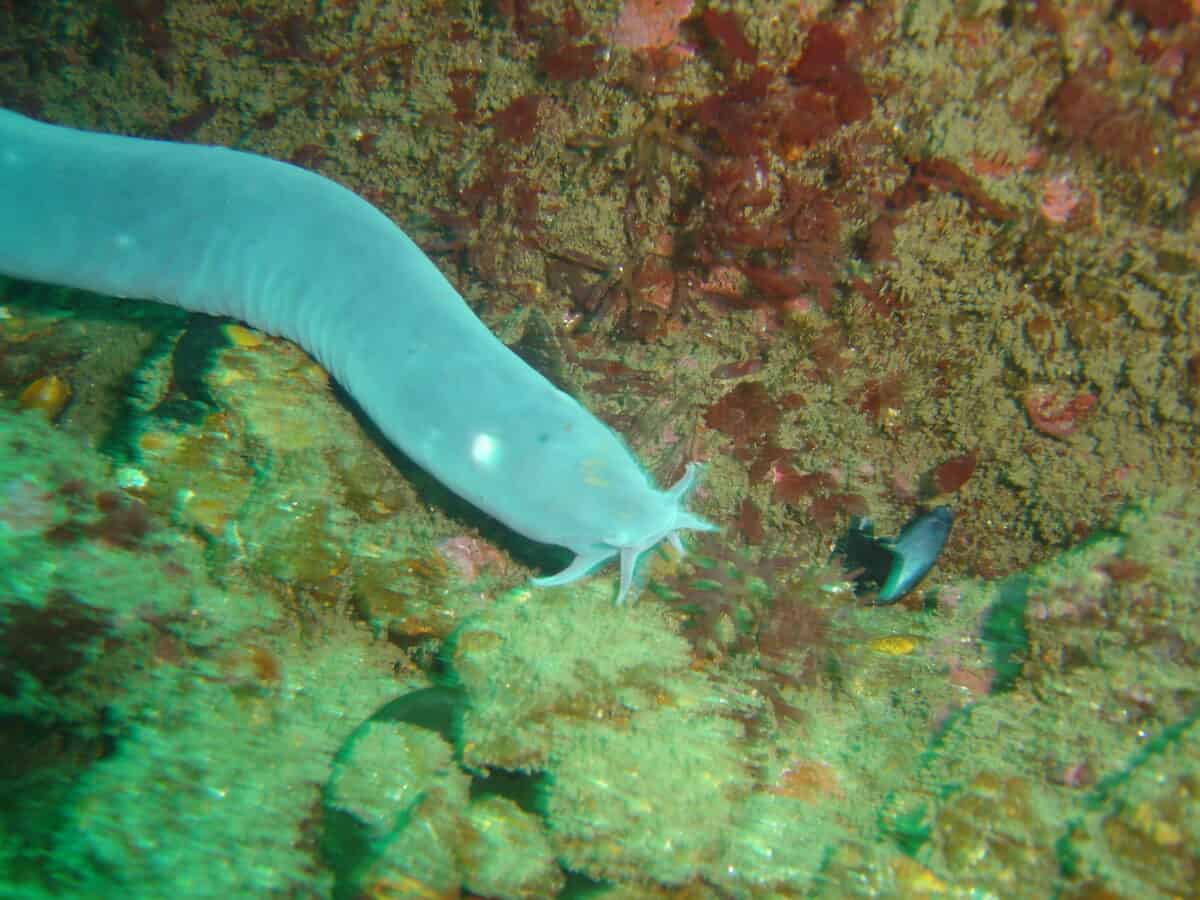
The hagfish, often considered one of the most disgusting creatures in the ocean, possesses a defense mechanism that’s as effective as it is repulsive. When threatened, this primitive fish-like creature can produce up to 5.3 gallons of slime in mere seconds from specialized glands along its body. This isn’t ordinary slime—it’s a remarkable substance composed of mucin proteins and thread-like fibers that, when combined with seawater, expand 10,000 times in volume. The resulting gel is so effective it can clog the gills of predatory fish, forcing them to abandon their attack or risk suffocation. Material scientists are now studying hagfish slime for applications in creating sustainable, ultra-strong fibers that could potentially replace synthetic materials like nylon. Beyond its slime defense, the hagfish possesses another bizarre talent: it can literally tie itself in knots. By passing a knot down its body, it creates leverage to escape predator grips and cleans off its own slime. Perhaps most impressive is the hagfish’s ability to survive without oxygen for extended periods—up to 36 hours—by reducing its metabolic rate by 90%, allowing it to thrive in oxygen-depleted environments where few vertebrates could survive.
9. Pistol Shrimp Creating Sonic Booms Underwater

The pistol shrimp, despite measuring only a few centimeters in length, generates one of the loudest sounds in the ocean using a specialized asymmetrical claw. When this modified appendage snaps shut, it does so with such incredible speed—up to 62 mph—that it creates a cavitation bubble capable of stunning or killing small prey. As this low-pressure bubble collapses, it generates a sonic blast exceeding 218 decibels (louder than a gunshot) and momentarily produces temperatures approaching 8,000°F—nearly as hot as the sun’s surface. This extraordinary ability allows pistol shrimp to hunt without physical contact with their prey. In some environments, colonies of pistol shrimp create such continuous snapping that they interfere with sonar equipment and submarine detection systems, becoming a genuine concern for naval operations. The pistol shrimp often forms a remarkable symbiotic relationship with certain goby fish species—the shrimp constructs and maintains a burrow while the fish, with its superior vision, serves as a lookout for predators. This partnership demonstrates how even animals with extraordinary offensive capabilities benefit from cooperation in the marine ecosystem.
8. Anglerfish Deep-Sea Bioluminescent Hunters

The anglerfish has evolved one of the most specialized hunting adaptations in the deep ocean—a bioluminescent lure that dangles from a modified dorsal fin ray extending over its head. This natural fishing rod (illicium) ends in a light-producing organ called an esca that houses symbiotic bacteria, which generate light through a chemical process known as bioluminescence. The anglerfish can control this light, flashing it in patterns that attract curious prey directly to its waiting jaws filled with long, fang-like teeth. What makes anglerfish truly remarkable, however, is their extreme sexual dimorphism and bizarre reproductive strategy. Males are tiny fractions of the female’s size and lack digestive systems in their adult form. When a male finds a female—a rare occurrence in the vast darkness—he bites into her body and chemically fuses with her, eventually dissolving until he becomes nothing more than attached reproductive tissue. Some female anglerfish carry multiple males, ensuring a permanent supply of sperm while the female provides nutrition and mobility. This extreme parasitic mating strategy represents one of the most drastic adaptations to the challenges of finding mates in the sparsely populated deep sea.
7. Boxfish Swimming Tanks with Toxic Defenses
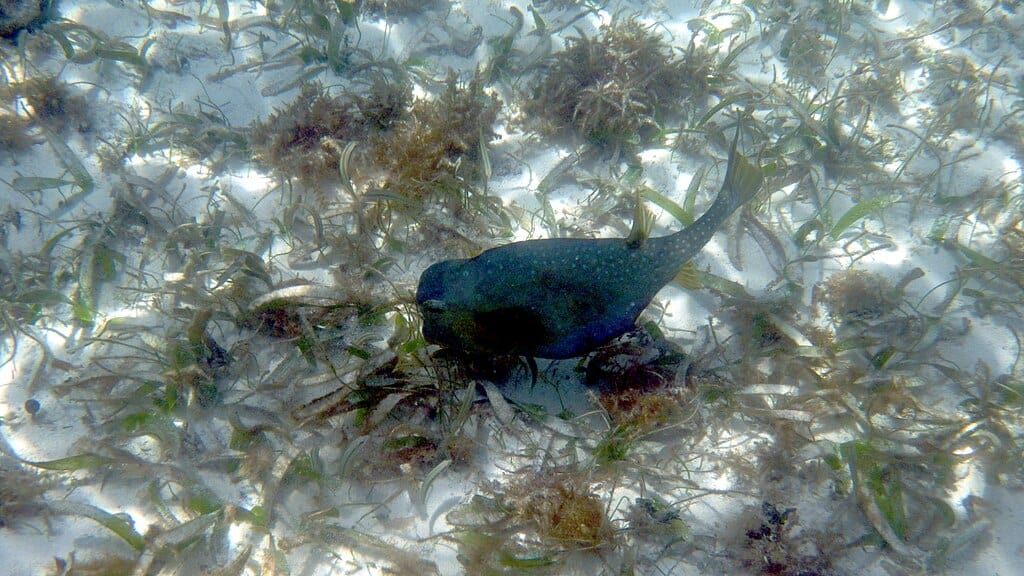
The boxfish’s rigid, boxy exoskeleton made of fused scales forms a virtually impenetrable armor that protects it from predators in coral reef environments. This unique body structure would seemingly make the boxfish an awkward swimmer, yet hydrodynamic studies have revealed quite the opposite—their unusual shape creates vortices that actually enhance stability and maneuverability, inspiring Mercedes-Benz to design a concept car based on the boxfish’s efficient design. Beyond their armored exterior, boxfish possess a remarkable chemical defense system. When threatened, specialized skin cells release ostracitoxin, a powerful neurotoxin that disperses into the surrounding water. This toxin is so potent it can kill other fish in the vicinity, creating a protective cloud around the boxfish. Interestingly, boxfish are immune to their own poison, possessing specialized adaptations that prevent self-harm. This combination of mechanical and chemical defenses makes the unassuming boxfish one of the most well-protected creatures on coral reefs, allowing them to swim openly despite their bright coloration and relatively slow movement—a luxury few other reef inhabitants can afford.
6. Sea Cucumbers Ejecting Internal Organs as Defense

Sea cucumbers possess one of the animal kingdom’s most dramatic defense mechanisms: the ability to violently expel their internal organs through their anus when threatened. This process, called evisceration, serves multiple purposes. The expelled sticky threads (derived from respiratory organs called Cuvierian tubules) can entangle predators or contain toxins that deter attackers. While this self-disembowelment would be fatal to most animals, sea cucumbers possess remarkable regenerative abilities that allow them to regrow their entire digestive tract and other internal organs within a few weeks. This regeneration involves complex cellular dedifferentiation and redifferentiation processes that medical researchers are studying for potential applications in human tissue regeneration. Some sea cucumber species have additional defensive adaptations, including body walls containing vanadium, a metal that creates an acidic environment toxic to many potential predators. Perhaps most impressively, certain species can essentially liquefy their body structure by loosening the collagen that provides their shape, allowing them to squeeze through incredibly tiny spaces before resolidifying—a biological feat that material scientists are attempting to replicate in synthetic materials.
5. Clownfish Sex-Changing Social Hierarchs
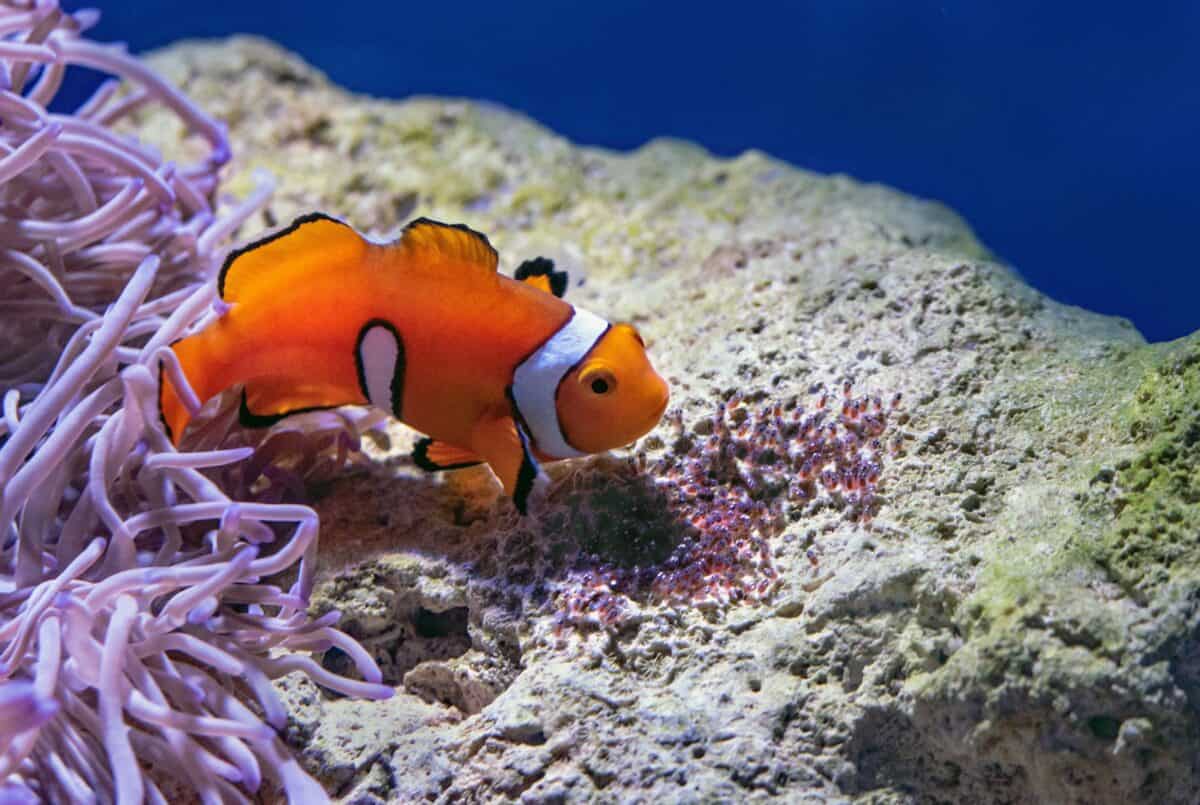
Clownfish, made famous by “Finding Nemo,” possess a remarkable biological ability that the movie never mentioned: they can change their sex. Living in strict hierarchical communities centered around sea anemones, clownfish exhibit a fascinating social and biological structure. All clownfish begin life as males, but the dominant individual in each group transforms into a female—a process called sequential hermaphroditism. If the female of an anemone dies, the largest male undergoes physiological changes, including the development of ovaries and the regression of testes, to become the new breeding female. This transformation is complete and irreversible, triggered by complex hormonal changes. Beyond this sexual plasticity, clownfish possess another superpower: immunity to the lethal stings of their host anemones. While the anemone’s tentacles contain nematocysts (stinging cells) that paralyze most fish, clownfish secrete a special mucus coating that prevents these stinging cells from firing. This mutually beneficial relationship provides clownfish with protection from predators while the anemone benefits from cleaning services and protection from anemone-eating fish. The clownfish’s ability to adapt both biologically and socially to maintain their community structure represents one of the ocean’s most sophisticated examples of evolutionary adaptation.
4. Cuttlefish Masters of Color-Changing Camouflage

Cuttlefish possess the most sophisticated color-changing abilities in the animal kingdom, capable of altering their appearance in less than a second to match their surroundings with astonishing precision. Their skin contains up to 200 specialized cells per square millimeter including chromatophores (pigment cells), iridophores (reflective cells), and leucophores (white reflecting cells) that work in concert to produce a virtually unlimited palette of colors, patterns, and textures. What makes this ability truly remarkable is that cuttlefish are colorblind, yet can perfectly match the colors of their environment—a paradox scientists are still working to understand. Beyond camouflage, cuttlefish use their color-changing abilities for complex communication, including courtship displays where males can display different patterns on each side of their body—showing aggressive patterns to rival males on one side while simultaneously displaying attractive patterns to females on the other. Their neurological control over these displays is so precise that they can create moving patterns across their skin, resembling hypnotic waves or bands of light. This visual sophistication is complemented by exceptional cognitive abilities, with cuttlefish demonstrating problem-solving skills, spatial learning, and even a form of self-recognition that suggests a level of consciousness rare among invertebrates.
3. Archer Fish Sharpshooters with Precise Water Jets
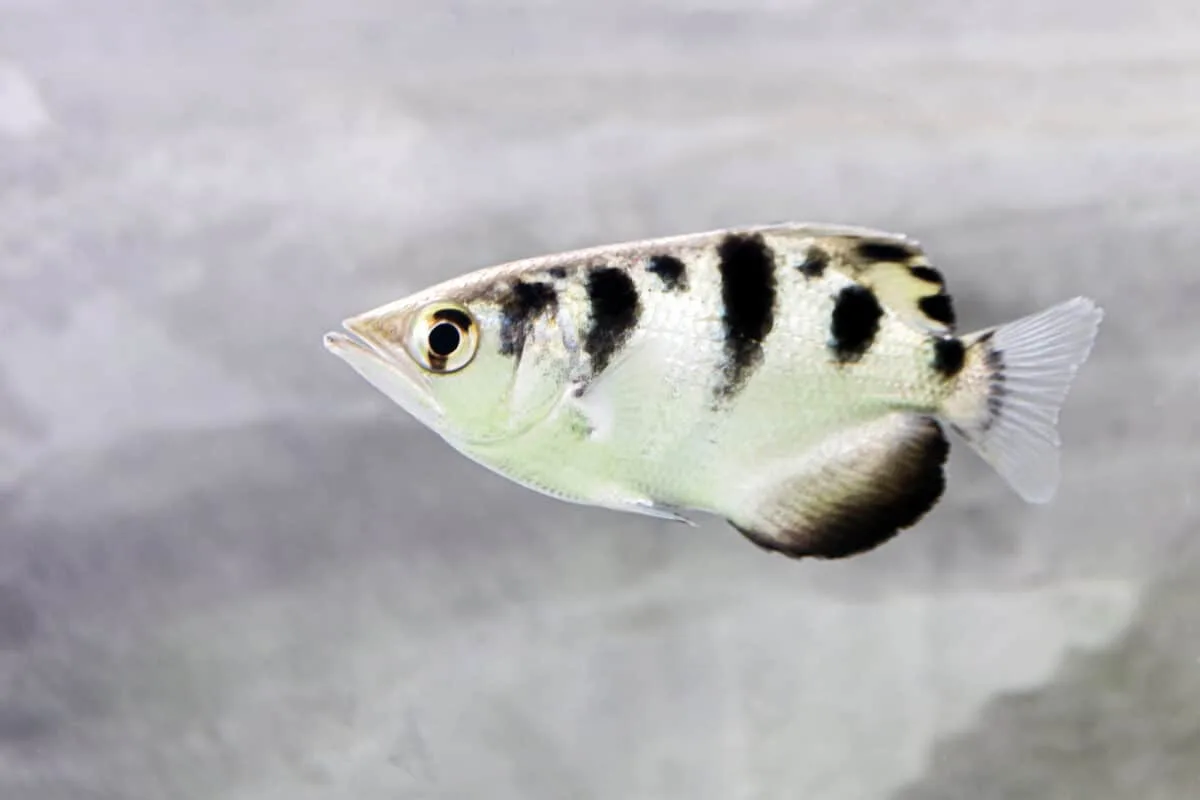
The archer fish possesses a hunting technique that demonstrates remarkable precision and an understanding of complex physics. These fish can shoot down insects resting on vegetation above the water’s surface by firing accurate jets of water from their specialized mouths. What makes this ability truly extraordinary is how archer fish account for light refraction at the water-air interface and adjust their aim accordingly—essentially solving complex optical physics problems instinctively. They can hit targets up to 3 meters away with remarkable accuracy, and research has shown they can learn to improve their aim through observation and practice. The water jet itself is precisely controlled, with the fish compressing its gill covers to force water through a groove in its mouth while adjusting its mouth opening to create a coherent stream rather than droplets. Even more impressive, archer fish can modulate the force of their shot depending on the size and distance of their target. Recent studies have revealed that archer fish possess exceptional visual acuity and pattern recognition, allowing them to identify specific insect species and prioritize more nutritious targets. This combination of physics comprehension, learned behavior, and sophisticated visual processing makes the archer fish’s hunting technique one of the most cognitively advanced adaptations among fish.
2. Tardigrades The Ocean’s Virtually Indestructible Extremophiles
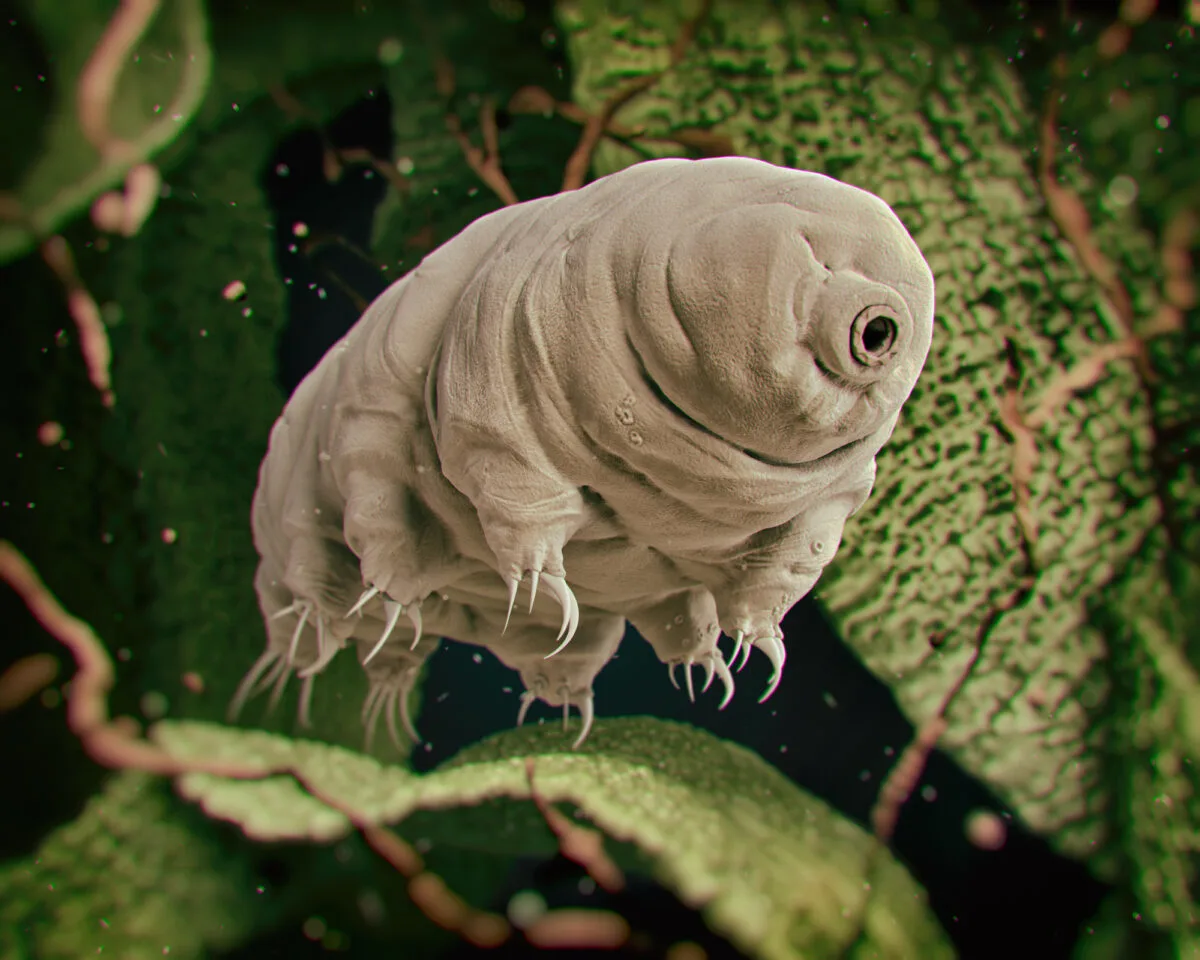
Tardigrades, or “water bears,” though found in various environments including freshwater, are also abundant in marine ecosystems where they display perhaps the most impressive survival capabilities of any animal on Earth. These microscopic eight-legged creatures can enter a state called cryptobiosis when faced with extreme conditions, essentially shutting down their metabolism to survive environmental stresses that would kill virtually any other animal. Marine tardigrades can withstand pressures six times greater than those in the deepest ocean trenches, survive temperatures from near absolute zero (-458°F) to well above boiling (300°F), endure radiation levels thousands of times higher than lethal doses for humans, and even survive in the vacuum of space. Their most remarkable ability may be anhydrobiosis—the capacity to lose over 99% of their body water and exist in a dehydrated state for decades before rehydrating and resuming normal activity when conditions improve. This suspended animation is possible because tardigrades produce special proteins that replace water in their cells and protect their DNA from damage. Recent genetic studies have identified unique “damage suppressor” proteins that exist only in tardigrades, which scientists are researching for applications in everything from vaccine preservation to radiation protection for astronauts. These marine microanimals represent the ultimate survival specialists in Earth’s oceans.
1. Hairy Frogfish Masters of Explosive Suction Feeding
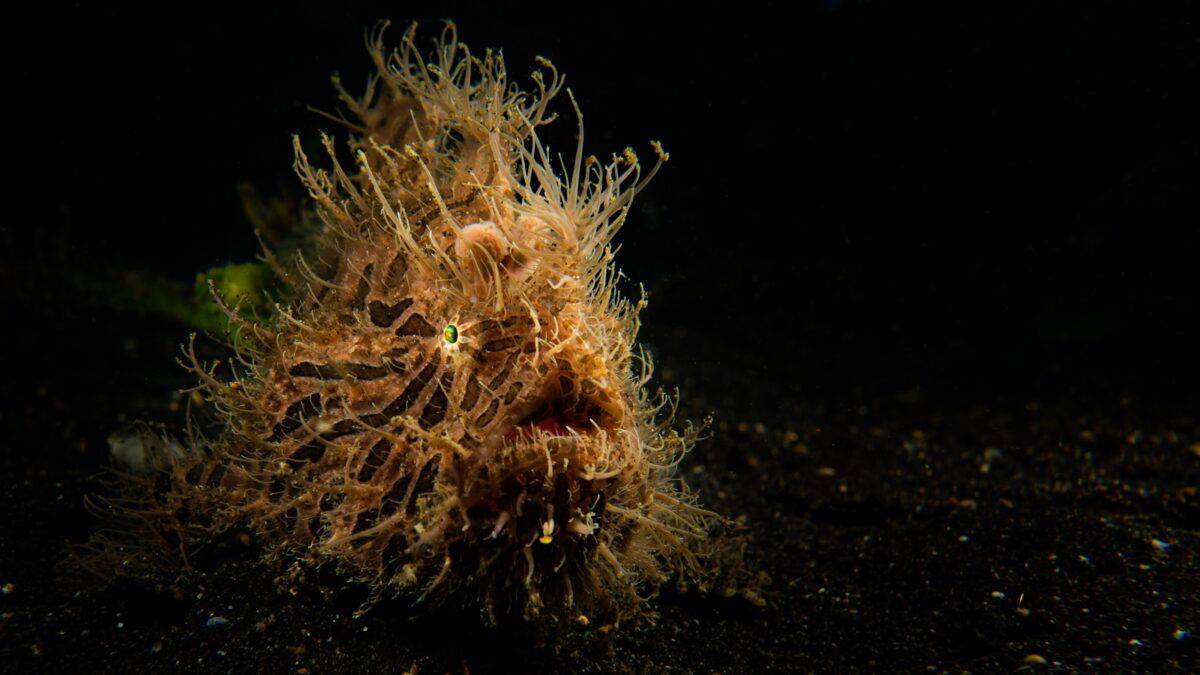
The hairy frogfish, a type of anglerfish covered in spinules that resemble hair (actually modified scales that aid in camouflage), possesses one of the fastest and most powerful feeding mechanisms in the animal kingdom. When targeting prey, this ambush predator can expand its mouth cavity to 12 times its resting volume in just 6 milliseconds—creating a vacuum that sucks in prey faster than a human eye can perceive. This explosive suction feeding happens with such force that prey items experience an acceleration of up to 80 times gravity, giving them virtually no chance to escape once the frogfish strikes. The mechanics behind this feeding strategy involve a series of highly specialized bones and muscles that work in precise coordination to create this ultra-rapid expansion. What makes this ability even more impressive is that frogfish can precisely control the direction and force of their suction to target specific prey items with remarkable accuracy. Beyond their feeding superpowers, hairy frogfish are masters of disguise, able to change their color and texture to match sponges, rocks, or coral formations. They also use their modified pectoral fins as “legs” to slowly stalk prey along the seafloor, and some species can even “jet” by forcefully expelling water from gill openings—providing a range of mobility options unusual among bottom-dwelling fish.
Conclusion:

From electric eels that unleash powerful voltage to tardigrades that survive the vacuum of space, the ocean is home to creatures whose hidden superpowers rival the most imaginative feats of science fiction. These extraordinary adaptations—from camouflage, regeneration, and bioluminescence to cognitive problem-solving and environmental mastery—showcase the breathtaking ingenuity of evolution. Each species featured in this exploration not only reveals the vast biological diversity of our oceans but also offers profound insights that could inspire breakthroughs in science, medicine, and technology. As we continue to study these marine marvels, one truth becomes clear: the ocean remains one of Earth’s richest frontiers of wonder, holding secrets that could change how we understand life itself.
- The Most Isolated National Park in the US - August 13, 2025
- Top 10 Most Endangered Animals in India - August 13, 2025
- 12 Creatures That Use Venom in Surprising Ways - August 13, 2025

